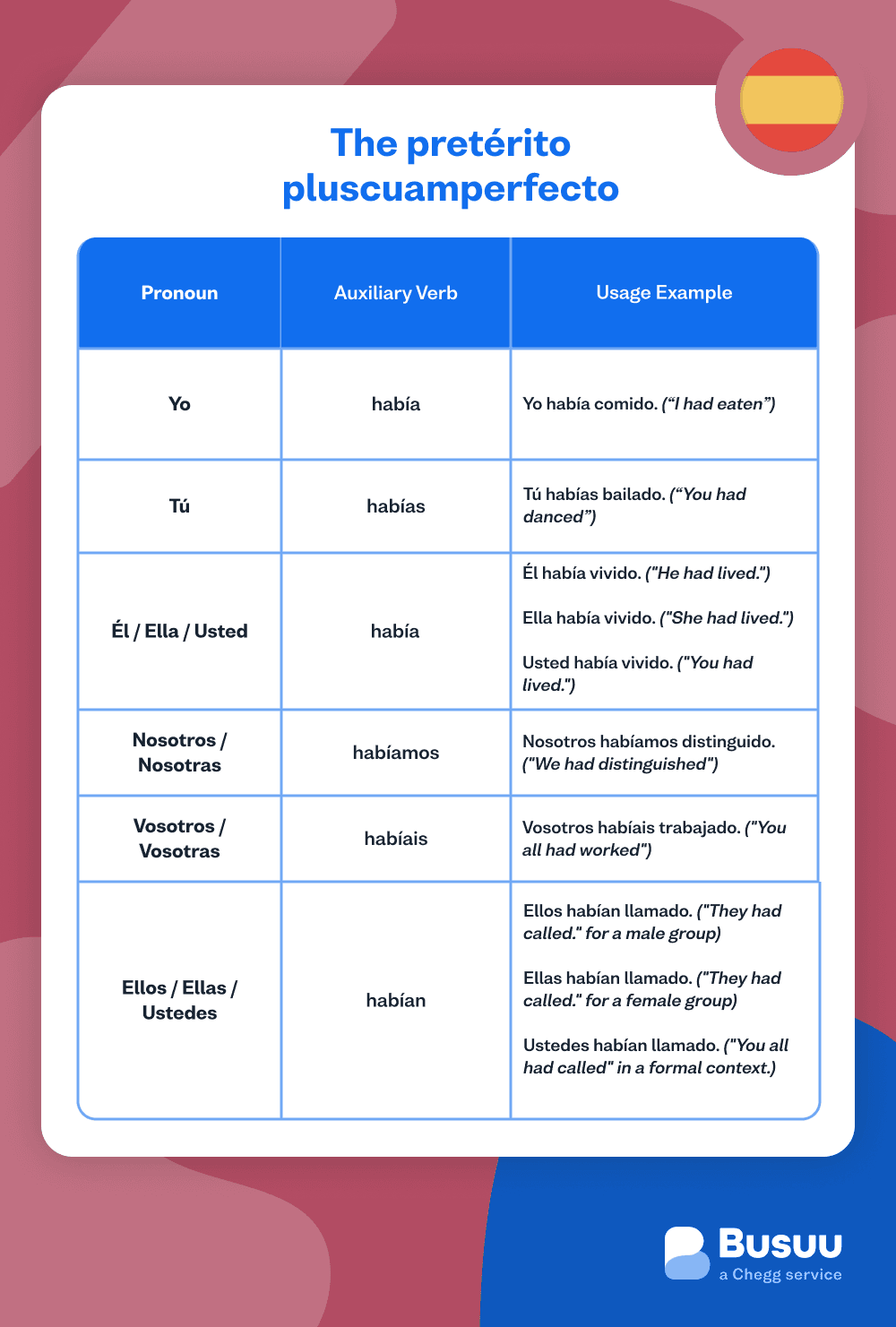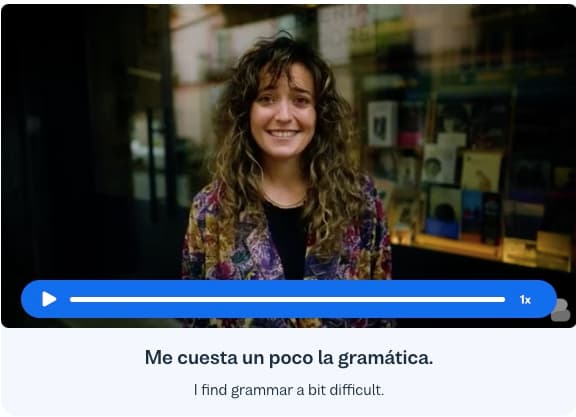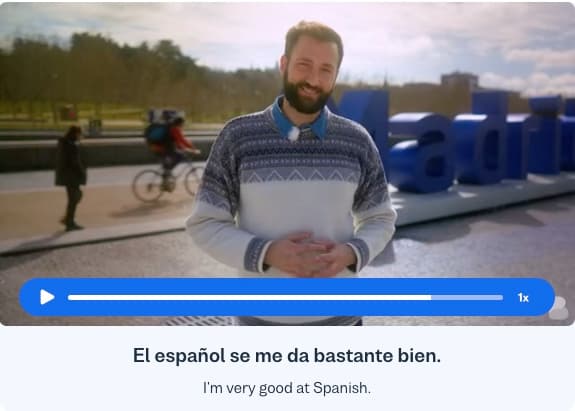I want to learn...
Learning a new language is an exciting journey, and mastering verb tenses is a crucial part of that process. The pretérito pluscuamperfecto, also known as the past perfect tense in English, is a crucial tense to learn when becoming more advanced in Spanish.
By the end of this article, you will have a solid understanding of this tense and will be able to use it effectively in your Spanish conversations.
Spanishpretérito pluscuamperfecto de indicativo: Overview
It sounds way more complex than what it is! And it’s also a lot easier to understand once you have a basic knowledge of the pretérito imperfecto and the past participle.
In practice, the pretérito pluscuamperfecto de indicativo is used to describe an action that took place before another action or time in the past. In other words, it’s used to establish a sequence of past events, usually in stories, or other types of explanations.
For example: “Ya había comido antes de llegar.” (I had already eaten before I arrived.)
How to form the Spanish pretérito pluscuamperfecto
The pretérito pluscuamperfecto is formed by using the imperfect tense of the auxiliary verb "haber" and the past participle of the main verb.
The formula to conjugate the pretérito pluscuamperfecto is:
Imperfect tense of haber + past participle of the main verb.

The pretérito pluscuamperfecto
| Pronoun | Auxiliary verb | Past participle examples |
|---|---|---|
| Yo | había | comido (I had eaten.) |
| Tú | habías | bailado (You - singular informal had danced.) |
| Él / Ella / Usted | había | vivido (He / She / You - formal had lived.) |
| Nosotros / Nosotras | habíamos | distinguido (We had distinguished.) |
| Vosotros / Vosotras | habíais | trabajado (You all had worked.) |
| Ellos / Ellas / Ustedes | habían | llamado (They / You all - formal had called.) |
Forming the past participle: Regular vs. irregular verbs
As you have seen, to form the past participle, most verbs change the infinitive termination-ar to-ado or -er/-ir to -ido. Nevertheless, not all verbs follow this pattern: A lot of irregular verbs take one of three terminations: -to, -cho, or -sto.
Abrir (to open): Yo había abierto (I had opened.)
Hacer (to do /make): Tú habías hecho (You had done /made.)
Volver (to return): Él / Ella había vuelto (He / She had returned.)
The Spanish pretérito pluscuamperfecto de indicativo in action
As we mentioned before, the Spanish pretérito pluscuamperfecto de indicativo is used to express an action that has already occurred in the past, before another past action or time reference.
Here are some examples:
Yo había estudiado antes del examen. (I had studied before the test.)
Tú ya habías comido cuando llegué. (You had already eaten when I arrived.)
Ella había viajado a muchos países. (She had traveled to many countries.)
Nosotros habíamos visto esa película antes. (We had seen that movie before.)
Vosotras habíais trabajado mucho en el proyecto. (You all had worked a lot on the project.)
Ellos habían aprendido español antes de mudarse a España. (They had learned Spanish before moving to Spain.)
The Spanish pretérito pluscuamperfecto de subjuntivo
The Spanish pretérito pluscuamperfecto de subjuntivo, also known as the past perfect subjunctive in English, is a compound verb tense used to express actions or events that have already happened in the past, before another past action or time. It is used in a similar way to thepretérito pluscuamperfecto de indicativo (past perfect), but in the subjunctive mood, to express uncertainty, doubt, desire or hypothetical situations.
To form thepretérito pluscuamperfecto de subjuntivo, you need to use the imperfect subjunctive form of the auxiliary 'haber' and combine it with the past participle of the main verb.
Note: Both forms of the conjugated auxiliary verb haber are equally valid!
The pretérito pluscuamperfecto de subjuntivo
| Pronoun | Auxiliary verb | Past participle examples |
|---|---|---|
| Yo | hubiera / hubiese | comido (If I had eaten.) |
| Tú | hubieras / hubieses | bailado (If you had danced.) |
| Él / Ella / Usted | hubiera / hubiese | vivido (If he/she/you - formal had lived.) |
| Nosotros / Nosotras | hubiéramos / hubiésemos | distinguido (If we had distinguished.) |
| Vosotros / Vosotras | hubierais / hubieseis | trabajado (If you all had worked.) |
| Ellos / Ellas / Ustedes | hubieran / hubiesen | llamado (If they/you all - formal had called.) |
The Spanish pretérito pluscuamperfecto de subjuntivo in action
Here are some examples of the pretérito pluscuamperfecto de subjuntivo:
Si hubieras llegado antes, habríamos ido al cine juntos. (If you had arrived earlier, we would have gone to the movies together.)
Ojalá hubiera estudiado más para el examen. (I wish I had studied more for the exam.)
Esperaba que ellos hubieran aprendido la lección. (I hoped they had learned the lesson.)
Si no hubiésemos perdido el tren, habríamos llegado a tiempo. (If we hadn't missed the train, we would have arrived on time.)
In conclusion, the pretérito pluscuamperfecto de indicativo and the pretérito pluscuamperfecto de subjuntivo are two verb tenses in Spanish that have similarities in structure but serve different purposes.
The pretérito pluscuamperfecto de indicativo, or past perfect indicative, is used to express actions that took place in the past before another past action or event. It is often used in storytelling and to give background information in narratives.
On the other hand, the pretérito pluscuamperfecto de subjuntivo, or past perfect subjunctive, is used to express actions or events that have already taken place in the past in relation to another past action, to express uncertainty, doubt, desire or hypothetical situations. It is used in complex sentences and conditional contexts.
Mastering these verb tenses allows Spanish speakers to accurately convey nuances of time and perspective, enhancing their ability to communicate effectively and express a wide range of past events and possibilities in different contexts.
Newlanguages


